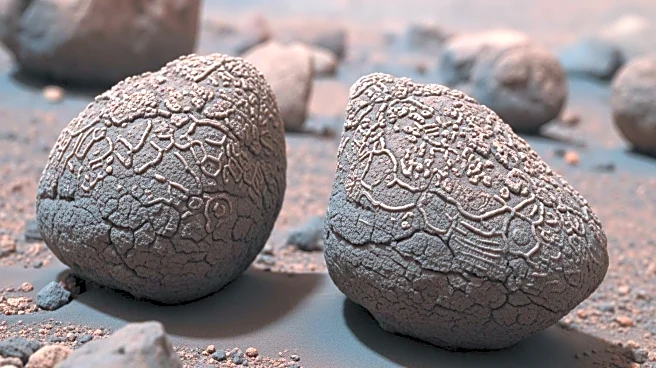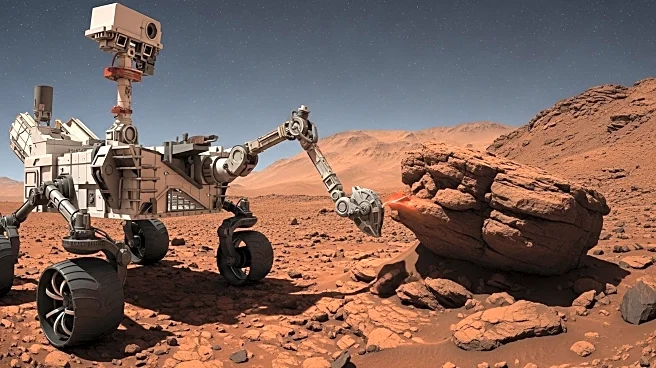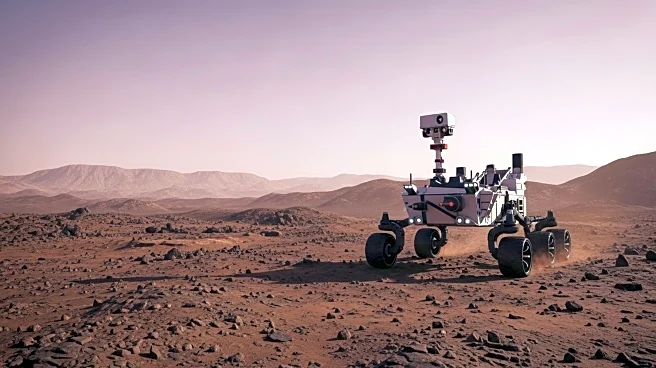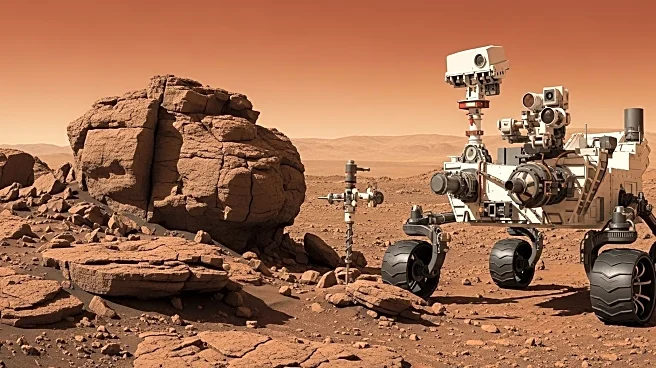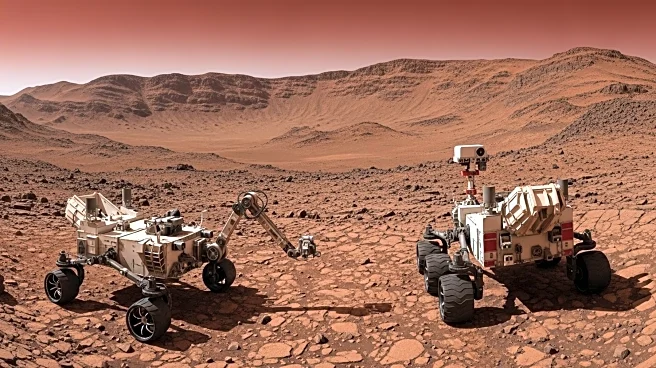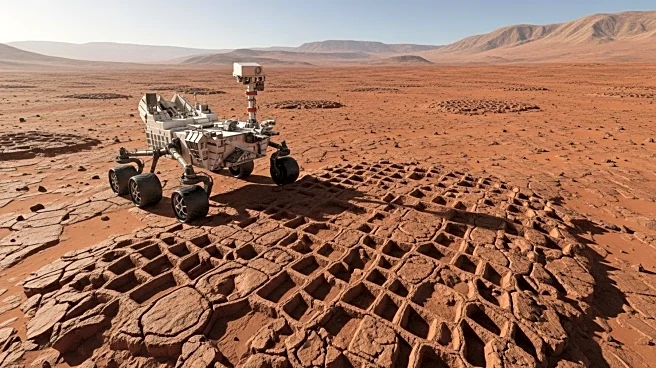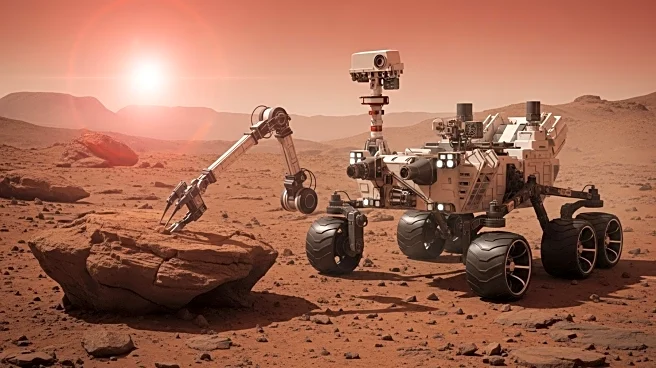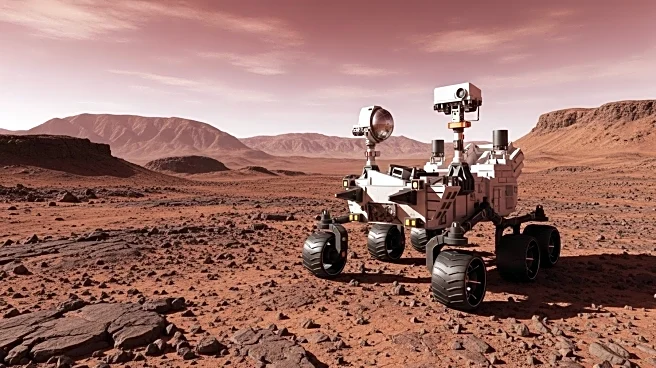What's Happening?
NASA's Perseverance rover has identified potential biosignatures in Martian mudstones within Jezero Crater, suggesting ancient microbial life. The discovery, made by a team including Texas A&M University geologist Dr. Michael Tice, focuses on the Bright Angel formation, rich in oxidized iron, phosphorus, sulfur, and organic carbon. These elements could have supported early microorganisms. The rover's instruments detected organic molecules and minerals indicative of redox reactions, typically driven by biological activity on Earth. The study presents two scenarios: abiotic reactions or microbial influence, with the latter being more plausible given the absence of high temperatures.
Why It's Important?
This discovery is crucial as it may provide evidence of past life on Mars, meeting NASA's criteria for 'potential biosignatures.' If confirmed, it would revolutionize our understanding of life's existence beyond Earth. The presence of organic matter and redox-sensitive minerals suggests that similar processes to those on Earth may have occurred on Mars, potentially supporting microbial life. This finding could impact future Mars exploration missions and the broader search for extraterrestrial life, influencing scientific and public interest in space exploration.
What's Next?
Perseverance has collected a core sample from the Bright Angel formation, prioritized for return to Earth in a future mission. Analyzing this sample with advanced instruments could provide more definitive evidence of past life on Mars. Scientists aim to examine the isotopic composition of the organic matter, fine-scale mineralogy, and search for microfossils. Further tests will determine the highest temperatures experienced by these rocks, helping to confirm or refute the potential biosignatures. This research could pave the way for new insights into Martian and terrestrial microbial ecosystems.
Beyond the Headlines
The parallels between Martian and terrestrial processes are striking, with life potentially utilizing similar processes on both planets around the same time. However, Earth's plate tectonics have altered ancient rocks, making it difficult to preserve features seen on Mars. This discovery offers a unique opportunity to study ancient microbial ecosystems in their original state, providing insights into the evolution of life on both planets.

